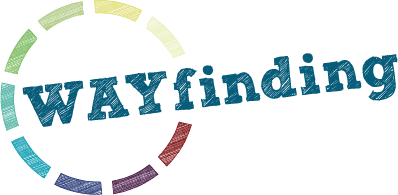| Anne Williamson |
Sometimes it seems like all I did as a kid was imagine. With creative neighbors at my side, my mom’s minivan became a rocket ship. We’d float around it pretending we were in zero gravity, and the horn an alarm for some terrible electrical malfunction. Later, the floors inside the house became dangerous alligator swamps. We’d toss out pillows, jumping from one to the next until safely on land again. I’d imagine things about my future too. I actually had a “make believe” son named Todd before I met and married my husband, Todd. And, I imagined where I would travel, who I would meet, what I would be doing with my life. That unlike how I felt at the time, I imagined someday I’d be comfortable in my own skin.
There is a large part of me that believes my whole life is the result of this imagination, and really continues to be.
I realize this is a bit of a strange thing to say: to believe my imagination creates my life. We adults tend to believe active imaginations are for children; that, in fact, letting all that imagination stuff go is part of what it means to become an adult.
What if this isn’t the case? Experts now tell us our imaginations help us learn the lessons of history; solve math problems, work problems, leadership problems. That they’re crucial to our empathizing with people and events half way around the world and in our own home, seeing another person’s perspective, believing their experience. And, that our imaginations are “in full swing” whether we like it or not – most prominently in the stories we tell, about others and even our own “remembered” lives.
Imagination is everywhere, and it’s necessary… especially today. We seem to be in the midst of a kind of great turning, a global paradigm shift. This is not easy, but it’s necessary and could be really good. We could, we can, use our imaginative capacity to heal deeply, to see each other differently, to create new ways of being.
To do so, we must begin by confronting many of our old stories. You know the ones? They don’t inspire you, free you. They keep others locked in a still frame. They keep you stuck too. They keep you preoccupied. They keep you, they keep all of us, from taking in new information, from seeing a different perspective, from using our imaginations.
That’s the irony of it, isn’t it? That the very stories we tell ourselves, neuroscience tells us, were once, in part, products of our imagination. And yet, these stories in time become enshrined, diminishing our ability to imagine anew.
Luckily, there are ways to shake old stories, to loosen them like a child’s tooth – until you’re ready to yank free or simply let it part on its own time. That’s what this round is all about: exploring the ways we can free ourselves from old stories that no longer serve us, others and the world. Freeing us to be able to imagine.
This kind of work takes vulnerability and courage. It is needed now more than ever.

